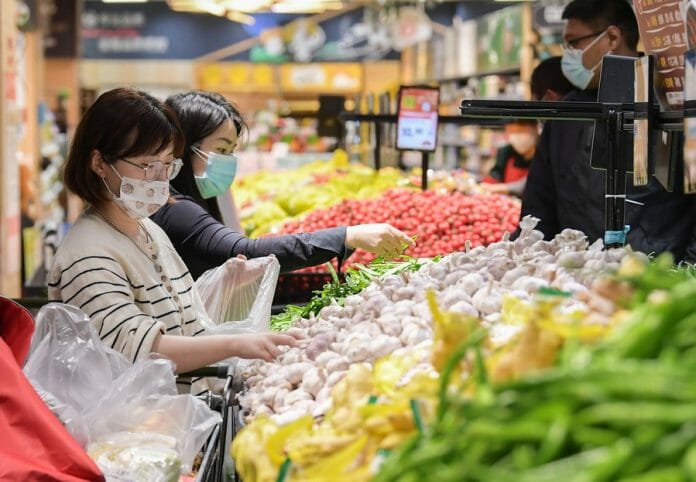China’s 20th party congress made several critical decisions. One of the most important was to accelerate the modernisation of Chinese society with high-quality development. What challenges and risks await China on its path to reaching this goal?
In his report to the congress, President Xi Jinping made clear that high-quality development was the top priority in building a modern socialist country – including implementing “dual circulation”, a strategy that was added to the party constitution.
China’s leadership has long recognised the need to move beyond the production and export-led growth model, even though it brought significant achievements and contributed to rapid economic growth over the past four decades.
A model based on local production with cheap labour and aggressive exports cannot continue to drive economic growth as wages rise and manufactured products lose their competitiveness in international markets.
In parallel with this process, China’s purchasing power grew, along with the domestic consumption market. That is why dual circulation was proposed, SCMP cited.
The idea was first voiced on May 14, 2020, during a meeting of the Politburo, at which Xi outlined the need to “give full play to China’s huge domestic market and consumption potential” to establish a new format of development where “domestic and international dual circulation would complement each other”.
It means that the new model of China’s economic development would focus not only on an active export policy but also on increasing domestic consumption while simultaneously focusing on attracting foreign investment and stabilising international trade. What is new is that, in the medium to long term, it aims to limit the dependence of China’s economy on foreign purchases.
Concentrating on the development of the domestic market with a priority on the hi-tech sector means that China will focus on modernisation and high-quality development, and continue to strive for a leading position in the distribution of global income.
Through innovation, China can absorb new segments of the global market, as it has done in, for example, the renewable energy industry. Eight of the top 10 global solar panel makers are based in China, and China’s three largest wind turbine makers collectively dominate the global market in terms of capacity installed.
On the international dimension of dual circulation, China’s ratio of trade to gross domestic product has fallen from 64 per cent in 2006 to 37 per cent last year. But the country remains more open to trade than, for example, the United States with a trade-to-GDP ratio of 23 per cent in 2020, though less so than the European Union with its ratio of 93 per cent.
The recent positive trends in China’s trade include diversification and a move towards goods with higher added value. The volume of trade with countries participating in the Belt and Road Initiative has grown significantly to reach 11.6 trillion yuan (US$1.6 trillion) last year, up from 8 trillion yuan in 2014.
Trade with its Asean neighbours in particular continues to grow. China’s trade volume with the Association of Southeast Asian Nations jumped to US$878 billion last year, higher than its €695.5 billion (US$713 billion) trade with the EU and its US$657 billion trade with the US.
As for the domestic aspect of dual circulation, China’s private consumption and services continued to grow. From 34.6 per cent of GDP in 2010, China’s private consumption increased to 38.5 per cent last year. The share of value-added services in GDP increased from 44.3 per cent in 2011 to 53.3 per cent last year.
At the same time, over the past decade, the ratio of investment to GDP has declined from 47 per cent in 2011 to 43 per cent last year. This year, private investment in the first five months fell slightly to 57 per cent of total investment but remained above the 55 per cent level achieved since 2012.
Looking at investment and personal consumption respectively as a percentage of GDP, the gap has narrowed over the past decade from 8.4 to 4.5 percentage points. But it is not declining fast enough, and its reduction is a vital goal in the dual circulation strategy.
In advanced Western countries, household income is typically 70–80 per cent of GDP. In China, households retain a smaller income of about 55 per cent of GDP. State-owned enterprises play an essential role in the country’s economy, and their income is usually spent not on supporting demand but on new investments. Thus, to increase consumer demand, China needs to pay more attention to the growth of household incomes.
Dual circulation is a new policy to balance the Chinese economy by reducing its dependence on export supplies and large-scale investment in fixed assets. In today’s Chinese economy, these two factors are no longer enough to stimulate high-quality economic growth and to increase household incomes. It will take an enormous effort from the whole society to support China’s “quality growth”, especially against strong headwinds in international markets.
Structural obstacles and constraints such as an ageing population, rising domestic debt, the need for a rapid transition to a new development and modernisation model, and declining labour productivity growth, will require tremendous effort and hard work from the entire Chinese society. But as recent history shows, China achieves its planned goals, no matter how ambitious they are.
Djoomart Kaipovich Otorbaev is a former prime minister of Kyrgyzstan and a visiting senior fellow at the Institute for Global Cooperation and Understanding, Peking University. He is the author of the forthcoming book, Central Asia’s Economic Rebirth in the Shadow of the New Great Game









